| www.alzado.net Vectorial Elevation | ||||||
| Relational Architecture 4 | ||||||
|
History Searchlights have been around for well over 100 years. The use of tightly collimated beams was typical of the first World Exhibitions where they were used to visualize the new energy that gave birth to modernity: electricity. Illuminating engineers were in high demand at the beginning of the 20th century, as described by Daniel Canogar, among others. Not only were they used for highlighting emblematic buildings but also to direct aeroplanes into landing trajectories. The use of collimated searchlights in Albert Speer’s Nazi spectacles produced intimidating architectures of monologic power where, as Canogar points out, people were props in the fascist spectacle. During the war, searchlights were used as a tracking devices for anti-aircraft surveillance, a function that was later replaced by the invention of the computer mouse, as Axel Roch shows. After the war, the lights were used for victory parades and ever since they are associated with celebrations. Today, searchlights are used mostly by corporate or state events that try to recreate a festive environment that we associate with a Hollywood film premiere, using repetitive light sequences. Vectorial Elevation was first produced in 1999 for the Zócalo Square in Mexico City. It is the fourth piece in the "Relational Architecture" series, which now includes nine pieces. Its main objective is to allow public control of the spectacular lighting possible with searchlights, which normally follows a pre-programmed sequence of movements. There are a large number of precedents for this type of work. A very thorough compilation of annotated links of historical precedents was compiled by researcher Jennifer Laughlin for Lozano-Hemmer’s “Amodal Suspension” website, here are a few selections from that list:
|
||||||
|
|
|
|||||
|
© Rafael Lozano-Hemmer, 1999 - 2003 |
||||||
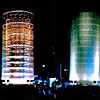 Toyo Ito’s interactive architecture, such as his 1986 Tower of Winds in Yokohama, which transforms on environmental changes such as noises and the speed and direction of the wind.
Toyo Ito’s interactive architecture, such as his 1986 Tower of Winds in Yokohama, which transforms on environmental changes such as noises and the speed and direction of the wind.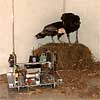
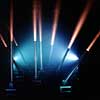
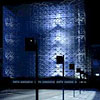 Christian Möller and Joachim Sauter’s 1994
Christian Möller and Joachim Sauter’s 1994  Rafael Lozano-Hemmer and Will Bauer's 1995 installation
Rafael Lozano-Hemmer and Will Bauer's 1995 installation  Knowbotic Research 1996-97
Knowbotic Research 1996-97 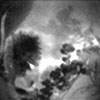 Ken Goldberg's telepresence pieces, such as his
Ken Goldberg's telepresence pieces, such as his 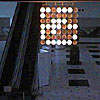 Masaki Fujihata's,
Masaki Fujihata's, 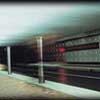 Hans Muller and Zwarts / Jansma Architecten 1998 installation in the
Hans Muller and Zwarts / Jansma Architecten 1998 installation in the  Stadtwerkstatt's
Stadtwerkstatt's  Johannes Gees'
Johannes Gees' 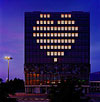 Chaos Computer Club's
Chaos Computer Club's